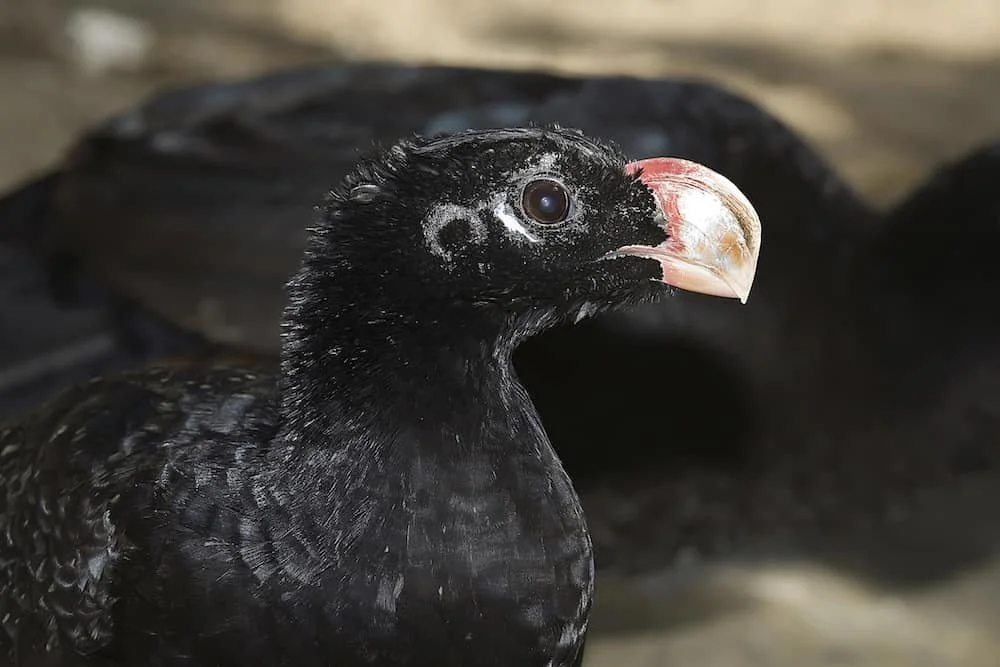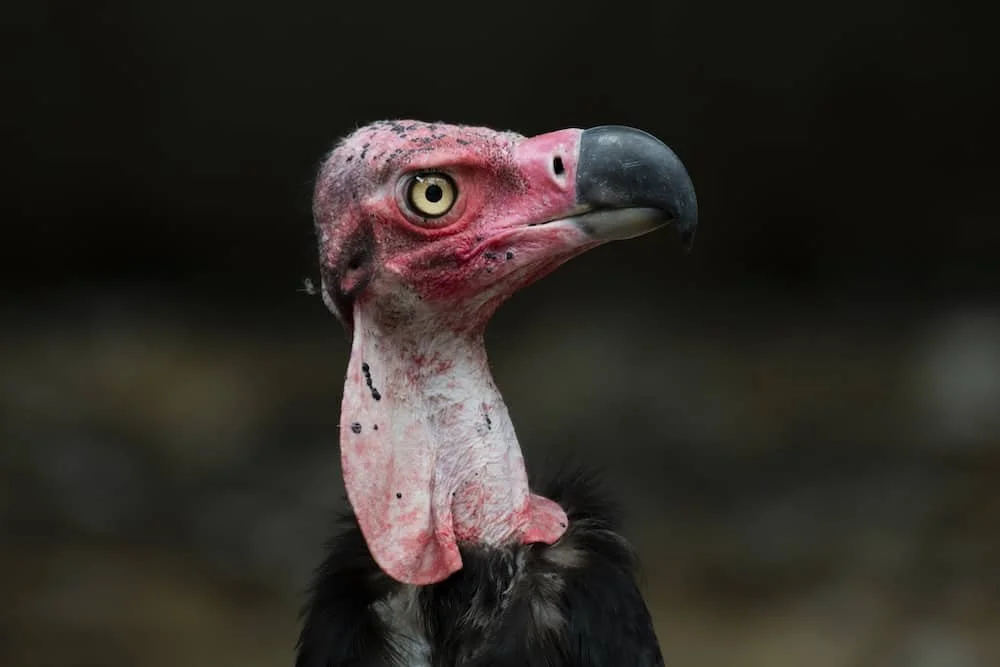Top 15 Rarest Birds in The World
Birds are some of the most amazing animals to watch. They are full of wonders and give you an exciting birding experience. According to National Geographic, there are between 50 –430 billion birds in the world. But out of all these birds, there are many rare species that are hard to find and on the verge of bird extinction.
While spotting these rare birds can be challenging, even a glimpse can provide an unforgettable wildlife encounter.
Here are 15 of the rarest birds in the world, from dazzling endemics found only on remote islands to vanishing species inspiring tireless conservation efforts.
Photo 206274214 © Mikephotos | Dreamstime.com
Spix's Macaw (Cyanopsitta spixii)
The striking blue Spix's macaw is one of the world's critically endangered and rarest birds, with fewer than 150 remaining in the wild. Native to Brazil, these macaws were coveted as pets due to their bright colors and ability to mimic speech—leading to overhunting. Habitat loss further reduced their numbers, and today they are only found in small areas of the Caatinga dry forest. Their survival remains precarious due to small population size, making them a focus of intensive conservation efforts.
Kakapo (Strigops habroptilus)
The nocturnal and flightless Kakapo is the world's heaviest parrot and also one of the rarest. Native to New Zealand, Kakapo were once abundant but suffered massive declines due to introduced predators like cats and mustelids. Only a few hundred Kakapos remain today, all on predator-free offshore islands.
Male Kakapos have an unusual mating system where they assemble leks and compete for females through elaborate courting displays. The Kakapo recovery program has centered on intensive management, including translocations, chick hand-rearing, and disease monitoring.
Hawaiian Crow (Corvus hawaiiensis)
Also known as 'alala, the Hawaiian crow is one of the rarest songbirds on earth. Endemic to the big island of Hawaii, nearly all wild 'alala were wiped out by habitat destruction and introduced diseases by the 1990s, leaving only 23.
With intensive management, the estimated population of these rare birds climbed to over 300 birds by 2018 through captive breeding and reintroductions into protected areas. However, habitat threats, including invasive predators, remain, and recent numbers suggest a population decline. These striking black birds with orange bills remain a conservation priority.
Alagoas Curassow (Mitu mitu)
The Alagoas curassow is one of the critically endangered birds in the world, largely due to continued loss of habitat and hunting on its limited range in Brazil. This large, terrestrial gamebird prefers the Atlantic coastal forest in northeastern Brazil but nests on the ground, making it vulnerable to predators.
As few as 130 birds remain in the wild, all located in a small fragment of the coastal forest habitat. The Alagoas curassow has become a mascot for Atlantic forest conservation, where less than 7% of the original habitat remains. Future conservation will require the management of threats within remnant fragments while restoring and connecting forest corridors.
Photo 96994693 | Alagoas Curassow © Casadphoto | Dreamstime.com
Ivory-billed Woodpecker (Campephilus principalis):
The Ivory-billed Woodpecker is known for its large size, bill carved from ivory, and eye-catching black and white coloration. It is arguably the rarest bird in the world. Historically found in Southeastern forests, it feeds on large insects within tree cavities and kills prey by hammering. Extensive surveys after 1944 failed to find them, but sporadic sightings continued.
A 2005 film showing an Ivory-bill in Arkansas rekindled search efforts. However, recent studies have cast doubt on these sightings, suggesting the species may be extinct. If any remain, the main threats are deforestation and human disturbance.
Madagascar Pochard (Aythya innotata)
The Madagascar Pochard is a large, extremely rare diving duck with black upper parts, white underparts and a chestnut head. Native to Madagascar, it was once found across the highland lakes of the country. However, hunting pressure and habitat degradation dramatically reduced populations such that by 1990, only two remained.
Intensive conservation efforts began, including captive breeding. Although numbers have increased to over 200 birds, they still face threats of invasive weeds, water quality issues, and illegal fishing leading to loss of most fish species. The Madagascar Pochard serves as an example of the difficulty of saving critically endangered species.
Sumatran Ground Cuckoo (Carpococcyx viridis)
The Sumatran Ground Cuckoo is a small, sparrow-sized cuckoo endemic to Sumatra, Indonesia. Its plumage is shades of olive brown above and pale yellow below. Little is known of its biology as it is only found in remote and undisturbed forests. It prefers to forage on the ground—feeding on insects and small fruits.
Threats include loss of habitat due to logging and agriculture, which has reduced its range by over 50% —leaving only about 70 – 400. Climate change may also affect the availability of prey and alter ecological conditions. Though listed as Critically Endangered, no accurate population estimates exist for this little-known bird.
Night Parrot (Pezoporus occidentalis)
The Night Parrot is possibly the rarest bird in the world today. It is a medium-sized, nocturnal parrot with brownish-grey upperparts and barred underparts. It was thought extinct until 2013, when one was discovered alive in a remote area of Queensland, Australia. Since then, only a few sightings and sounds have been reported. It prefers sparse grassland and shrubland, foraging on grass seeds at night and sheltering in spinifex during the day.
The reasons for its extreme rarity are unclear, but threats include predation by feral cats and changes to the fire regimes it depends on. Researchers hope that with more information about the Night Parrot's basic biology, targeted conservation can help prevent its return to extinction.
Red-headed Vulture (Sarcogyps calvus)
The Red-headed Vulture is one of the world's most endangered raptors and rare birds endemic to South Asia. It has a majestic vulture form with unfeathered red skin on its head and neck. Once abundant across the subcontinent, feeding on carcasses of livestock, its estimated population declined by over 97% in the 20th century.
The main cause is for its decline is poisoning from the veterinary drug Diclofenac, which is fatal to vultures. Other threats include electrocution and poisoning. With fewer than 200 breeding pairs left in the wild, urgent interventions are needed. Most governments like India have banned Diclofenac, but efforts to restore carrion supply and curb poaching are also critical to save this grand yet dwindling raptor.
Photo 234479717 © Wirestock | Dreamstime.com
Black Stilt (Himantopus novaezelandiae)
The Black Stilt is one of the world's rarest wading birds, endemic to New Zealand. It is mostly black with long reddish legs and a slender straight bill. Loss of habitat due to wetland drainage and introduced predators like cats, ferrets, and stoats have severely threatened its survival. By the 1980s, the wild estimated population consisted of just 23 Black Stilts.
Following extensive conservation, the number of all the rare birds has increased to around 250 today with the help of captive breeding. Most Black Stilts still require intensive management through predator control, releases of captive-bred chicks, and habitat restoration. The birds remain threatened due to their small population, leaving them vulnerable to environmental and chance events.
New Caledonian Owlet-nightjar (Aegotheles savesi)
The New Caledonian Owlet-nightjar is arguably the rarest and least known nightjar in the world. Endemic to New Caledonia, this mysterious bird has only been observed a handful of times since its discovery in 1985. With a population of no more than 50, very little is known of its ecology and habits. It seems to inhabit montane rainforests above 900 meters, preferring dense understory thickets.
Threats to its survival likely include habitat loss due to mining, hunting by feral cats and perhaps the introduced feral pig. Further research shows the urgency to understand this nocturnal endemic's basic needs and threats. This could help form targeted conservation action to protect this unique but poorly known forest dweller.
Socorro Dove (Zenaida graysoni)
The Socorro Docve is a small island dove endemic to just one island in the Revillagigedo Archipelago off Mexico. It has pale gray underparts and dark gray upperparts with a pale pink bill. It was thought extinct for many decades after its discovery in 1898 until it was rediscovered in 1972. Its estimated population exists on just two small offshore islands with 250 to 500 birds remaining.
Threats include introduced Black rats preying on nests and chicks and hurricanes that can wipe out much of the population at once. The birds have been translocated to rat-free islands and intensive conservation is underway, including continuous rat eradication. The Socorro Dove thus serves as an example of how a critically endangered species can be pulled back from the brink of extinction through targeted action.
Baer's Pochard (Aythya baeri)
Baer's Pochard is one of the most rare birds endemic to China. It has dark brown upperparts, chestnut head, black breast, and white flanks. The global estimated population is 250 mature individuals. Extreme habitat loss due to dam construction and pollution has severely impacted this species. Other threats include hunting, predation by ground predators, and hybridization with the common pochard.
Conservation is underway to protect key wetland sites, reduce hybridization, and establish captive populations as insurance. With such a small number of mature species remaining, Baer's Pochard is highly vulnerable to disturbance, disease outbreaks, and other chance events. Further safeguarding of critical wetlands and intervention to address threats will be crucial to saving this beautiful bird from extinction.
Colombian Mountain Grackle (Macroagelaius subalaris)
The Colombian Mountain Grackle is a medium-sized grackle endemic to the high Andes of central Colombia. It has glossy black plumage with purple and green iridescence and an elongated tail. This grackle is restricted to humid grassland and marshes above 3,000 meters, feeding on seeds, insects and small vertebrates. Its entire global population may comprise as few as 150 to 400 individuals.
Threats include destruction of wetlands for agriculture and invasive species competing for food and habitat. With such a small and highly localized population, this grackle is exceptionally vulnerable to stochastic events. Conservation efforts aim to reduce the impacts of invasive species, control hunting, and restore degraded wetland ecosystems. Further studies also show the need to further understand the Colombian Mountain Grackle's ecological requirements and threats to devise long-term survival strategies for this critically endangered endemic.
Himalayan Quail (Ophrysia superciliosa)
The Himalayan Quail is one of the world's rarest birds, endemic to the high Himalayas of India, Nepal, and Bhutan. Little is known of this elusive quail's habits due to its inaccessible, remote habitat above 3000 meters. It appears to be restricted to alpine meadows and tundra, where it forages on the ground for insects, seeds, and berries. Its population is estimated to be less than 50 worldwide.
The main threats to the survival of these critically endangered birds are habitat loss due to infrastructure development, as well as hunting and trapping by locals. Without accurate population data, the species' true status remains unknown. Urgent scientific study is needed to determine the Himalayan Quail's basic ecological requirements, threats, and population size. Along with habitat protection, initiatives to curb localized hunting and engage local communities will be critical to safeguard this mountain mystery before it becomes the next casualty of global biodiversity loss.
In our next update, we’ll add to our list: Golden Pheasant (Chrysolophus pictus), South Philippine Dwarf Kingfisher (Ceyz Melanurus), Orange Bellied Parrot (Neophema chrysogaster), and the Vogelkop Superb Bird-of-Paradise (Lophorina Niedda)






